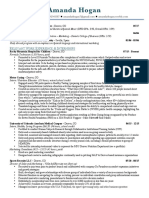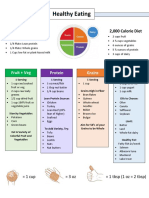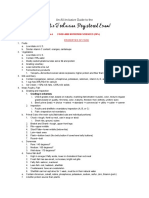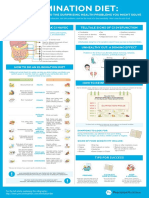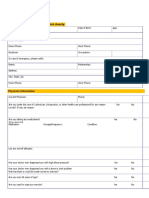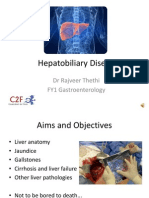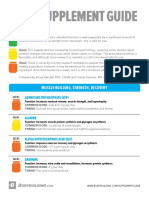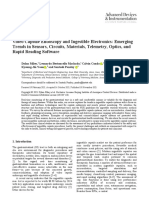Interpreting Bravo
®
pH Studies
A 3-Step Process

Interpreting Bravo pH Studies
A 3-Step Process
STEP
1
Assess
Assess the pH Tracing
The pH tracing is a graphical representation of the data that has been collected during the pH test. To assess the pH tracing, review the patient history, visually inspect the data (diary and artifacts), and develop a preliminary diagnosis.
STEP
2
Affirm
Affirm Preliminary Diagnosis
The Reflux Tables and DeMeester Scores are used to affirm the preliminary diagnosis. Examine each
24
-hour period separately, using the worst day for diagnosis, since the number of acid reflux episodes can vary from day to day.
STEP
3
Associate
Associate Symptoms
Symptom correlation is an important component of an accurate diagnosis. Evaluate the SAP & SI Tables to determine whether the symptoms are associated with reflux events.
Detailed Example and Notes
STEP
1
Assess the pH Tracing
The pH tracing is a graphical representation of the data that have been collected during the pH test. To assess the pH tracing, review the patient history, visually inspect the data (diary and artifacts), and develop a preliminary diagnosis.
A. Review the Patient History and Reason for the Bravo pH TestB. Verify Diary Entry
The software uses all of the diary information in calculations. If this information has not been entered... STOP! Do not interpret study until the entire diary (Meals, Supine & Symptoms) has been entered.
• Verify that the Meal and Supine times have been entered.• Verify that the symptoms have been entered (indicated by a line and identified above the tracing).• Note any artifacts (indicated by gray sections above graph corresponding with gaps in pH line). These will not be used in calculations.• Verfiy that capsule did not detach during study. If detachment occurred, enter it as an “Ignore” event in the diary – see
Example of Early Detachment
on page
13
.
C. Review the Tracing
• Look at the tracing in
12-16
hour segments. Observe acid reflux events (when blue tracing line dips below red pH
4
line) and consider:- Are there a large number of reflux events and/or symptoms?- Do reflux events occur during supine or upright periods, or both?- Do symptoms appear to be occurring in or around reflux events? (Symptom association is considered positive if the symptom occurs within two minutes of the reflux event. A more detailed view of the tracing may be required.)
D. Form Preliminary Diagnosis
• From this information, determine whether you believe the patient has acid reflux or not, based on how often and how long the tracing shows the pH
< 4,
and whether this occurs during daytime, nighttime, or both.• Step
2
will use the data from the study to affirm your preliminary findings.MealsArtifactSupineHeartburnAcid Reflux Events
2
Detailed Example and Notes
STEP
2
Affirm Preliminary Diagnosis
The Reflux Table and DeMeester Scores are used to affirm the preliminary diagnosis. Examine each
24
-hour period separately, using the worst day for diagnosis, since the number of acid reflux episodes can vary from day to day.
A. Examine Reflux Tables
Total Fraction Time (%) that pH
< 4
is the single parameter which has been shown to best correlate with endoscopic damage.
1
Normal is
< 4.4%
on the worst day.
C. Affirm Preliminary Diagnosis
Assure that Total Fraction Time pH
< 4
and the DeMeester Score for the worst day affirm the preliminary tracing diagnosis. If not, review Step
1
again and look for opportunities to reconcile the tracing with the Reflux Table and DeMeester Score.
3
B. Observe DeMeester Score
2
Normal =
< 14.72
– Examine each
24
-hour period separately, using the worst day for diagnosis.
1
Am J Gastroenterol
,
1992; 87:1102–1111.2
Arch Surg,
2004; 139:848-854.
Reflux Tables
Reflux Tables compile the data that have been collected during the test, much of which is used in the other pH report measurements. The important parameter from the tables is Total Fraction Time pH
< 4 (%)
, examined for each
24
-hour period separately, using the worst day for diagnosis.
1.
Total number of reflux events
2.
Total number of reflux events
> 5
minutes
3.
Duration of longest reflux episode
4
. Time pH
< 4
(min)
5.
Total Fraction Time (%) that pH
< 4
is the single parameter which has been shown to best correlate with endoscopic damage.
1
Normal is
< 4.4%
on the worst day.DeMeester Score
The DeMeester Score is a method of adding weights to six common pH measurement para-meters and presenting esophageal acid exposure data as a cumulative score. The score is then compared to data from normal individuals. The DeMeester Score takes into account and weights these six parameters:
1.
Total percent time pH
<
4.02.
Percent time pH
< 4.0
in the upright period
3.
Percent time pH
< 4.0
in the recumbent period
4.
The total number of reflux episodes
5.
The total number of reflux episodes longer
> 5
minutes
6.
The duration of the longest reflux episode
DeMeester Normal =
< 14.72
– Examine each
24
-hour period separately, using the worst day for diagnosis, since the number of acid reflux episodes can vary from day to day.Worst DayWorst Day
DeMeester Score-Day
2
Total score -
69.1
, DeMeester normals less than
14.72 (95
th percentile)
DeMeester Score-Day
2
Total score -
69.1
, DeMeester normals less than
14.72 (95
th percentile)



